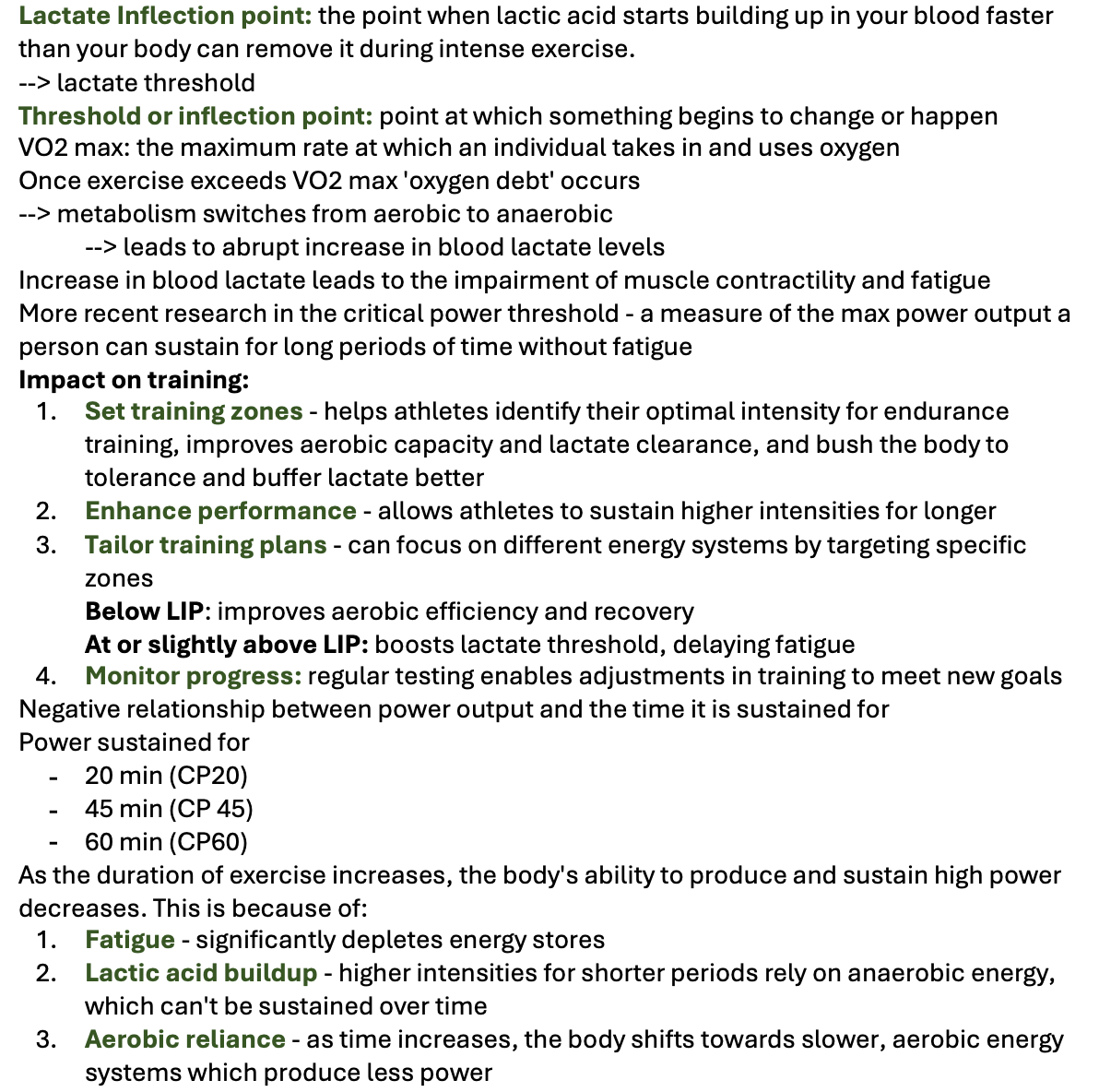Lactate Inflection Point (HL)
Lactate Inflection point: the point when lactic acid starts building up in your blood faster than your body can remove it during intense exercise.
--> lactate threshold
Threshold or inflection point: point at which something begins to change or happen
VO2 max: the maximum rate at which an individual takes in and uses oxygen
Once exercise exceeds VO2 max 'oxygen debt' occurs
--> metabolism switches from aerobic to anaerobic
--> leads to abrupt increase in blood lactate levels
Increase in blood lactate leads to the impairment of muscle contractility and fatigue
More recent research in the critical power threshold - a measure of the max power output a person can sustain for long periods of time without fatigue
Impact on training:
Set training zones - helps athletes identify their optimal intensity for endurance training, improves aerobic capacity and lactate clearance, and bush the body to tolerance and buffer lactate better
Enhance performance - allows athletes to sustain higher intensities for longer
Tailor training plans - can focus on different energy systems by targeting specific zones
Below LIP: improves aerobic efficiency and recovery
At or slightly above LIP: boosts lactate threshold, delaying fatigue
Monitor progress: regular testing enables adjustments in training to meet new goals
Negative relationship between power output and the time it is sustained for
Power sustained for
20 min (CP20)
45 min (CP 45)
60 min (CP60)
As the duration of exercise increases, the body's ability to produce and sustain high power decreases. This is because of:
Fatigue - significantly depletes energy stores
Lactic acid buildup - higher intensities for shorter periods rely on anaerobic energy, which can't be sustained over time
Aerobic reliance - as time increases, the body shifts towards slower, aerobic energy systems which produce less power
